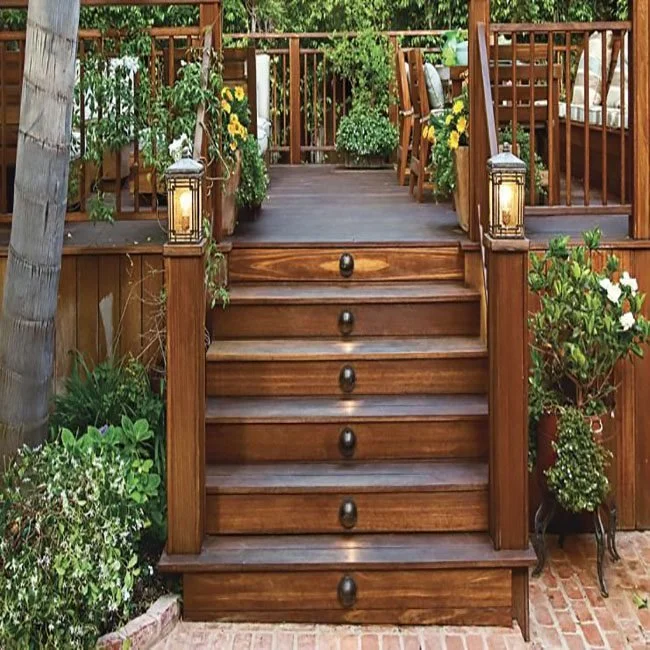Deck Staining: Why You Should Stain Your Deck In The Fall
Fall is the best time for most decking projects.
Fall is quickly approaching, which means preparations for winter are right around the corner. As the weather cools down and the air becomes dryer, we tend to bring our projects inside. We start renovations on our bathrooms or kitchens, you know, before the holidays when all of the family comes to visit. But, what most homeowners don’t know is that when it comes to decking, Fall is the best time of the year. Especially in regards to deck staining.
Deck staining is best done in Fall.
Here’s why that is:
We all know that winter is wet, and cold, and dry. These are some of the most damaging things to a wood deck. These are the factors that cause rot and splitting, and you really, really don’t want that. By staining your deck in Fall, you are giving your deck that extra protection against all the damaging weather of the coldest months of the year. Stain, like anything else, works the best in the first few months- and that’s when you really need that protection if you want your deck to last longer, and get past the winter without damage.
Another reason to stain in winter is that stain is best applied when there is less of a chance of rain. You need a dry surface, and cooler weather (between 50-60 degrees is the ideal temperature) so that the stain can seep into the wood without drying too fast, or too slow.
It’s also best if the sky is cloudy, or if you can get the job done early in the morning or in the evening when the sun starts to fade on the horizon. Deck staining in the sun could cause it to dry too quickly, which means it won’t adequately douse the deck, and you’ll be left with duller results and less protection for your deck.
Building a deck in Fall
If you don’t have a deck yet, but are wondering what time of year is best to start building, Fall is your answer. Because of the reduced humidity, with temperatures that are moderate, your decking materials won’t swell (wood swells with humidity).
It also means you’ll be working in cooler weather, which is better for you, of course.
Another benefit is that materials tend to be more affordable in the Fall- in certain regards anyways. Many lumber companies are looking to get rid of remaining lumber in preparation for the colder months when they have to store the lumber.
Which stain is best for deck staining?
You mostly have a choice between oil- based stains or water based. There are things like soy-based stains, but for simplicity, we’ll stick to the basics.
Oil based stains
Oil based stains seep deep into the grains of your deck and form a seal that keeps outside water from penetrating.
Oil based stains will also last longer, meaning longer time before you have to reapply- although this varies depending on the type of weather your deck has been subjected to. The only possible problem is that the wood isn’t completely dry when the sealant is applied. Because of that protective seal it forms, the water will be trapped inside, which has the potential and likelihood of causing rot.
Since it is always recommended to clean off your deck with a hose and a deck brush before staining, be sure that you allow for enough time for your deck to completely dry before using oil based stain.
Water based stains
water based stains have improved over the years and are becoming more popular. There are many benefits to using this stain: faster drying time, breathability of the wood, easier clean up, and it’s typically made with fewer chemicals.
You will still get the mildew resistance, the beautiful color, and the durability (though you might have to reapply yearly).
The disadvantages are that you will have to reapply more often than an oil based stain, and you have to be sure to apply an even amount to keep a consistent color throughout the whole deck. You will also have to be sure you don’t use too much water based stain, since it can sometimes raise the grain of the wood.
If you’d like to start building your deck this Fall, or would like help with your existing deck, give Rocky Mountain Forest Products a call at: (720) 792-6208. You can also visit our website, for more information, or stop by our warehouse during business hours.




